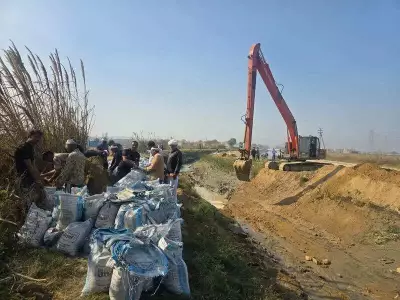
In a significant boost to Assam's traditional handicraft sector, approximately 100 women weavers from Cachar district are poised to benefit from the Geographical Indication (GI) registration of their unique weaving techniques. This landmark development promises to revolutionize the local cottage industry while preserving centuries-old cultural heritage.
Economic Upliftment Through Traditional Craft
The GI tag serves as a powerful economic instrument that will enable these skilled artisans to command premium prices for their authentic products. By legally protecting their traditional designs and weaving methods, the registration prevents imitation and ensures that the benefits directly reach the creators.
"This recognition is not just about legal protection—it's about dignity and economic freedom for our women weavers," explained a district official involved in the initiative. "The GI tag will open doors to national and international markets that value authenticity and craftsmanship."
Preserving Cultural Heritage
Cachar's weaving tradition represents a rich cultural legacy passed down through generations of women artisans. The intricate patterns and unique techniques distinctive to the region have long been part of Assam's cultural identity, yet faced the threat of being overshadowed by mass-produced alternatives.
The GI registration ensures that this cultural treasure receives the protection and recognition it deserves, while simultaneously creating sustainable livelihood opportunities for rural women.
Market Access and Better Returns
With the GI tag in place, Cachar's weavers can now:
- Access premium markets that value certified authentic products
- Receive fair prices for their labor-intensive craftsmanship
- Build brand identity around their unique weaving traditions
- Compete effectively against machine-made alternatives
This initiative represents a crucial step toward recognizing and rewarding the skill and dedication of women who have kept this traditional art form alive through challenging economic circumstances.
Future Prospects
Industry experts predict that the GI registration will not only improve immediate income levels but also attract younger generations to continue the weaving tradition. The enhanced economic viability of this craft could reverse the trend of rural-to-urban migration among skilled artisans.
As these 100 women weavers embark on this new chapter, their success story could serve as a model for other traditional craft communities across India seeking to balance cultural preservation with economic progress.





